There is already an article on this blog about clothing and luggage for short day hikes.
Page Contents (click line to jump the text)
If you want to do day hikes but want to climb the higher mountains in Ireland, here are a few important recommendations.
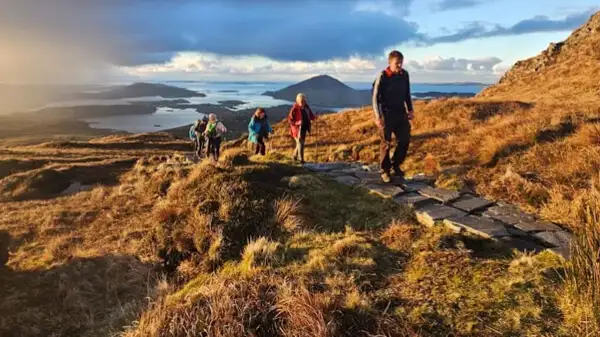
The Irish cutely call it hillwalking, not mountain hiking. At the same time, however, they warn against not taking the matter seriously enough. Even though the Irish mountains are by no means high alpine, it can still be dangerous or at least very unpleasant.
By the way, we live in Ireland (second home) and I have done a lot of hiking in Wicklow Mountains and other places myself. We have travelled the island again and again over many years and therefore know it very well.
Ireland’s mountains
The five highest mountains in Ireland are all in County Kerry and are just over or just under 1000m high. Then there are a few more mountains around 900 and 800 or 700 metres high in various low mountain ranges in the country.
Lugnaquilla, or “Lug” as the locals call it, is in the Wicklow Mountains and is the highest mountain in Ireland outside Kerry. It has an altitude of “only” 925 metres. There are three different routes for the ascent, with a length of 11-16km.
The average duration of the tour is around 5-8 hours, and the tour is generally classified as difficult/strenuous. The trail is not marked, so navigating the bog higher up can be difficult.
It can be risky if high fog or low-hanging clouds worsen visibility. The Lug is known for the fact that bad visibility can come up abruptly and quickly in what seemed to be good weather.
Then it becomes very difficult to find the right descent and there are steep passages and rock faces in some places that make the descent impossible (for normal people). It can be very windy on the Lug and in winter there is often snow at the top.
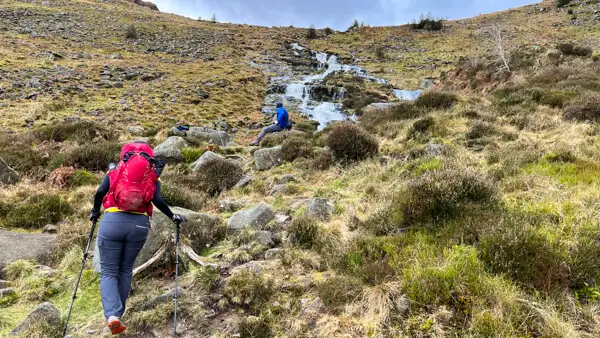
So not very high, the mountain, but still rather for more experienced mountain hikers or hillwalkers.
Now that we have a picture of the conditions, the requirements for clothing and equipment are almost self-evident:
Hiking boots and more
The trails can be hard, soft (bog), rocky, or rutted. Well broken-in sturdy, sturdy ankle-high hiking or trekking boots are highly recommended.
I have very light but stiff Alpine mountain boots – they are not necessary here, but if you have some and like to walk in them (as I do), they are not a mistake.
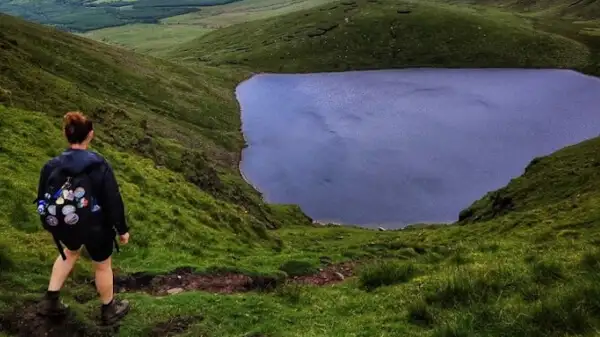
The boots should definitely have a waterproof membrane. Good matching hiking socks (wool or sythetic or wool-synthetic mix) are a given, and a second pair in your luggage also makes sense.
Irish hillwalkers are often seen wearing gaiters. They protect you from wet bracken, heather and all sorts of prickly gorse bushes. I have quick-drying hiking trousers with a smooth, firmer outer material at the bottom – something like that also works very well.
Trousers, jacket and rain protection
I like a reasonably wind-repellent but still very breathable softshell jacket and a good pair of quick-drying breathable hiking trousers for the ascent.
The waterproof jacket and – depending on the weather – trousers to pull over should always be in your rucksack. You can also combine and wear membrane trousers and a membrane jacket (Gore-Tex) if you prefer (for me, membrane jackets quickly become too “sweaty” when climbing).
Trekking poles
Especially downhill, trekking poles are wonderful aids to balance yourself better and take some of the strain off your knees. Walking poles also work well enough.
Headgear and hands
If you use poles and tend to get blisters on your hands, you might like to take thin gloves in your luggage. In cooler weather, this is also a good idea because of the wind and temperatures at the summit. For the same reason, a cap should not be missing. In sunny weather, sun protection is quickly lacking on the treeless mountains – a cap or foldable/soft hat as sun protection is then a good companion, along with sunglasses and sunscreen.
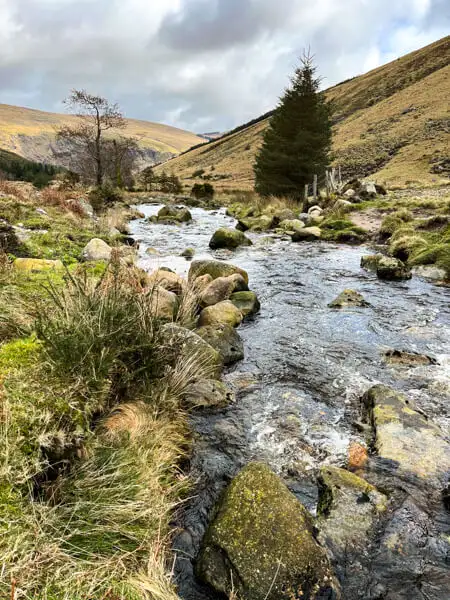
Functional underwear and insulating layer
Please don’t use cotton – it dries badly and makes you cold! Sports underwear, or functional underwear, is a must. Depending on the weather, either short or long.
Depending on the weather, you may or may not need a thin second layer – but there should be at least one spare dry fleece in your rucksack so you can put something dry on top. Better to take one more fleece, it can get cold up there. Many prefer to take a down jacket for the summit and the descent – as you like.
The rucksack
A good backpack with a chest strap, hip belt and back padding or frame makes perfect sense. In summer, the 20-litre category is certainly sufficient; in the cooler season, a few litres of volume offer more space for warm spare clothing.
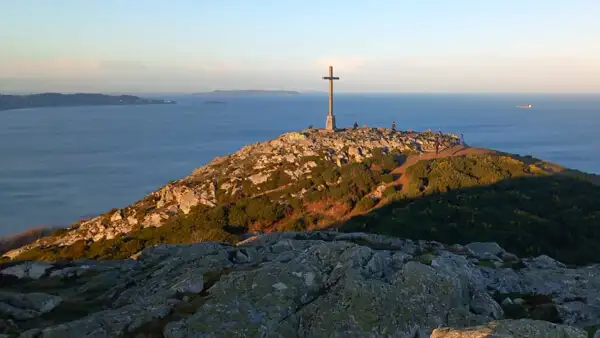
Water and provisions
Assume that there will be no water on the mountain and that the tour will unexpectedly take a little longer – how much water do you need then? I don’t take less than 2 litres, rather more.
You can also have a little extra food in reserve – a few more muesli bars are hardly noticeable and can help enormously.
Safety and navigation
A good map and a compass are recommended for hillwalking, because bad weather can pass over the summit and then the view is swallowed up by the clouds!
Alternatively, you can print out maps online and laminate them (because of humidity) or take a hiking GPS with you. I wouldn’t rely on your smartphone alone, as you won’t have reception everywhere.
In any case, you should familiarise yourself with the tour in advance, whether by paper map or GPS.
However, for emergency calls (112 and 999 in Ireland and 999 in Northern Ireland) you should have your fully charged smartphone with you and perhaps a power bank to charge it. This is especially true if you use your smartphone for photos, videos, the drone, or for navigation.
On long day hikes I would also definitely take a small headlamp or torch – in case it gets dark on the way, or as a signalling device in case of emergency. A signal whistle is also a good idea.
Last but not least, a first aid kit should not be missing, possibly an emergency blanket (foil) and perhaps blister plasters for the small “trophies” of the arduous hike.
Equipped in this way, you can then start your hillwalking tour in Ireland!
I wish you lots of fun!!!
More interesting articles for you
HILLWALKING IN IRELAND – THE MOST BEAUTIFUL ASCENTS FOR BEGINNERS
HILLWALKING IN IRELAND: THE MOST BEAUTIFUL ASCENTS FOR EXPERIENCED HILLWALKERS
22 TIPS FOR YOUR HIKING VACATION IN IRELAND
HIKING AND WILD CAMPING IN IRELAND – IMPORTANT TIPS!
Photo credits cover photo: In the mountains of Beara, photo by Ulrich Knüppel-Gertberg (www.irland-insider.de, www.ireland-insider.com)